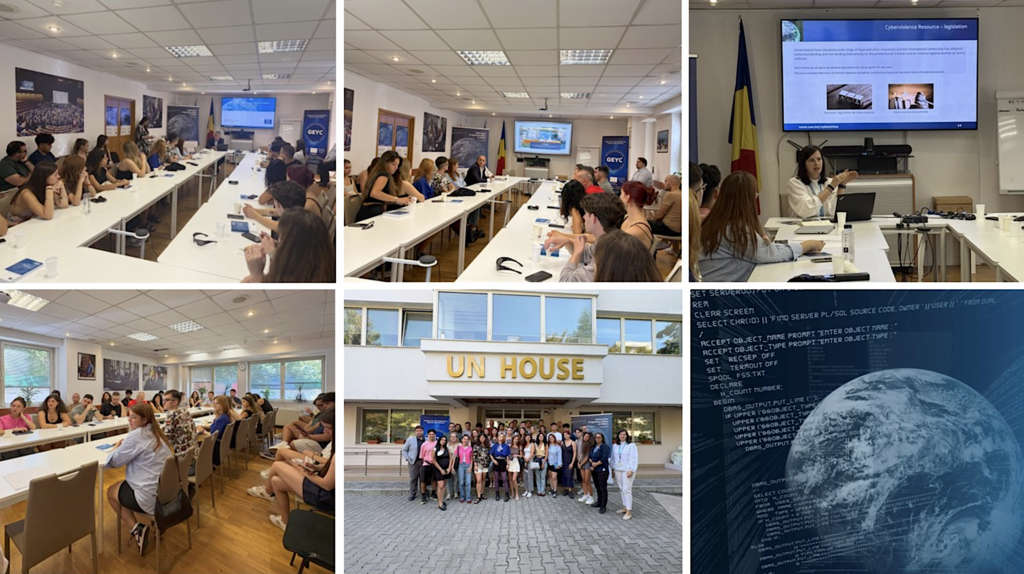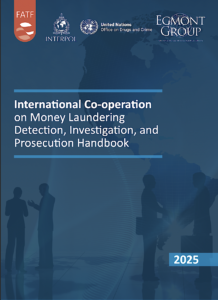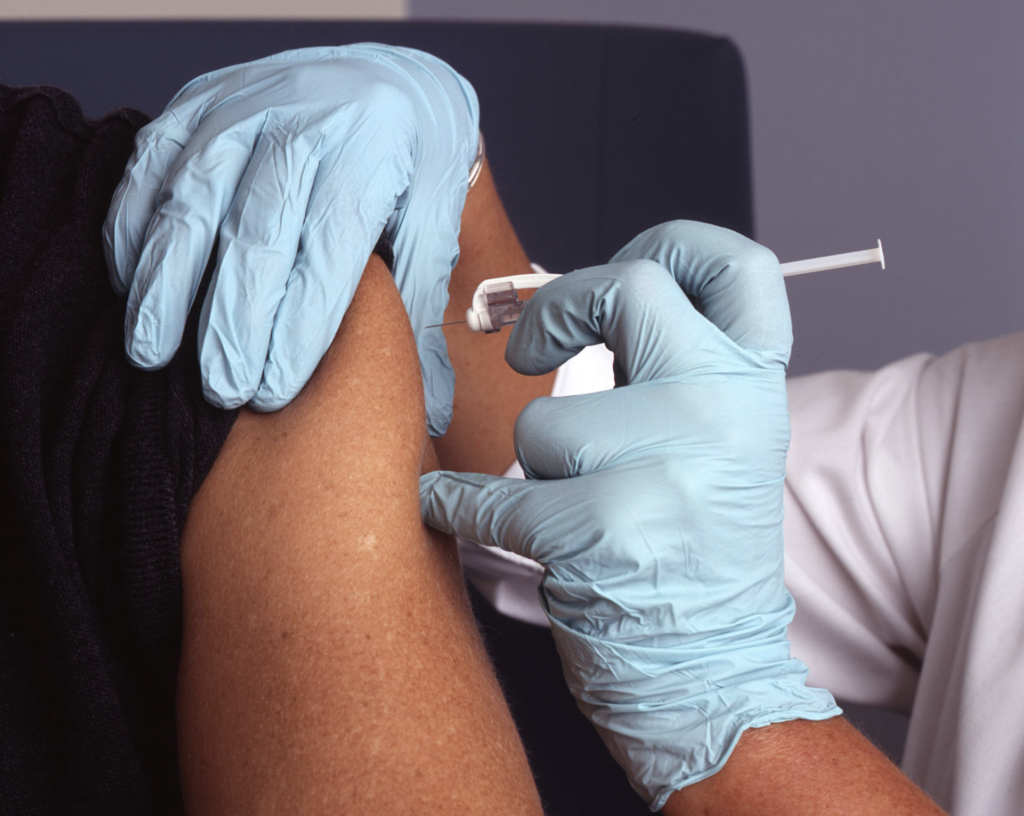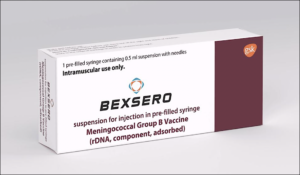| EINRIDE OPERATES FIRST EVER FULLY AUTONOMOUS HEAVY-DUTY TRUCK ON A PUBLIC ROAD IN BELGIUM AT THE PORT OF ANTWERP-BRUGES

Einride, a technology company that provides digital, electric and autonomous solutions for road freight, has for the first time operated a fully autonomous heavy-duty vehicle on a public road in Belgium.
This safety-validated demonstration, achieved at Port of Antwerp-Bruges, was permitted under the Belgian regulatory framework and it showcases how Belgium — and Europe — can take the lead in advancing autonomous freight technology.
Johan Klaps, chairman of the board of directors Port of Antwerp-Bruges and Antwerp port alderman: “Antwerp is more than a logistical hub: it is also a place where the mobility of tomorrow is tested and concretized. Autonomous and sustainable applications such as Einride’s proves that innovation is a driver for competitiveness and economic growth.”
Already operational with autonomous trucks on behalf of customers in both Europe and the U.S., Einride demonstrated its autonomous technology, encompassing several advanced hardware and software components, including Einride Driver (its proprietary Autonomous Drive Stack), its purpose-built cabless autonomous truck, and Control Tower (its intelligent fleet management and oversight platform).
Henrik Green CTO and General Manager for Einride Autonomous Technologies: “Now in our third European country, Einride continues to demonstrate success in securing permits and achieving first-of-their-kind deployments. Today in Antwerp, we showcase how public and private sectors can come together toward shared goals. European Ports, such as Antwerp-Bruges, are essential for decarbonizing logistics and secure our supply chains; and with the European Commission acknowledging autonomous vehicles as key to EU competitiveness, we’re proud to showcase a clear example of how innovation and regulation can be balanced for safer, more efficient and sustainable logistics.”
Einride operates one of the biggest fleets of heavy-duty electric trucks in the world, serving companies across North America, Europe, and the Middle East. The company’s freight platform uses data gathered over years of operations, which puts it in a unique spot to roll out autonomous tech at scale. Because of its purpose-built cabless vehicle, Einride also has the ability to scale with less than one remote operator per vehicle, paving the way for more cost-efficient logistics solutions.
Einride designs, develops and deploys freight technologies to accelerate the transition to future-proofed transportation. Its platform includes connected electric and autonomous heavy-duty vehicles, charging infrastructure and an intelligent freight operating system. Founded in 2016, Einride became the world’s first company to operate an autonomous, electric vehicle on a public road in 2019. Today, Einride operates one of the largest fleets of heavy-duty electric trucks servicing Global Fortune 500 companies across the US, Europe and the UAE.
| €945 MILLION FOR NEW CLEAN AVIATION INITIATIVES: 12 GROUNDBREAKING PROJECTS SELECTED

The Governing Board of the Clean Aviation Joint Undertaking has launched €945 million, to support 12 visionary projects aimed at decarbonising aviation.
The selected initiatives in the field of new aircraft concepts and innovative propulsion technologies and systems will complement those funded under Clean Aviation’s First and Second Calls for Proposals. Projects will start beginning of 2026 and first flight tests are planned for 2028-2029. The projects will help reduce net emissions of greenhouse gases for commercial air travel by no less than 30% compared to 2020 state-of-the-art technologies, and will pave the way for cleaner aircraft by 2035.
The results of Call 3 also mark the start of a new cooperation in regional aviation between the EU and Canada: PHARES (Powerplant Hybrid Application for Regional Segment), has been selected to receive €69 million in EU funding. The project, which will advance hybrid-electric propulsion for regional aircraft, is coordinated by a Canadian aircraft engine manufacturer.

“Europe will not fly into the future with yesterday’s technologies. Together with trusted partners, like Canada, we set our course toward CO2 emission reductions by 30% – to stay competitive, secure sustainable growth, and keep our industry ahead of other world regions.” Says Ekaterina Zaharieva (European Commissioner for Startups, Research and Innovation)
 “Achieving our climate goals and advancing sustainable aviation can only be done if public and private actors work hand in hand. By supporting the brightest minds, fostering technical excellence and encouraging novel solutions, we can accelerate the breakthroughs our industry needs. The projects selected under Clean Aviation Call 3 represent an important milestone on this journey.” Says Sabine Klauke (Co-chair of the Governing Board, Head of Digital Design Manufacturing and Services “Next Gen”, Airbus)
“Achieving our climate goals and advancing sustainable aviation can only be done if public and private actors work hand in hand. By supporting the brightest minds, fostering technical excellence and encouraging novel solutions, we can accelerate the breakthroughs our industry needs. The projects selected under Clean Aviation Call 3 represent an important milestone on this journey.” Says Sabine Klauke (Co-chair of the Governing Board, Head of Digital Design Manufacturing and Services “Next Gen”, Airbus)
Overall, 12 projects will receive funding in the following areas:
- €199 million EU funding for Ultra-efficient Short-Medium Range aircraft technologies
- €144 million EU funding for Ultra-efficient Regional aircraft technologies
- €20 million EU funding for Fast Track Areas (FTAs)
- Transversal projects dedicated to Aircraft Concept Integration & Impact Assessment have been awarded €15 million EU funding.


(Executive Director of the Clean Aviation Joint Undertaking)
“The results of Call 3 show the variety of innovative technological concepts to boost the entry-into-service of highly efficient aircraft by 2035. These projects have high potential to make major advancements towards climate neutrality and sustainability.” Says Axel Krein (Executive Director of the Clean Aviation Joint Undertaking)
Call 3 introduced a new initiative to advance disruptive technologies, the Fast Track Areas (FTAs). The FTAs are designed to de-risk alternative or complementary technical solutions offered by Research Centres and SMEs. They put the focus on proposals that can rapidly advance impactful technologies to the development phase and are closely connected to the Short-Medium Range and Regional aircraft coordinators. Four promising projects were selected within this realm.
All selected projects are in line with the Clean Aviation Strategic Research and Innovation Agenda (SRIA).
| C-PROC OPENED ITS DOORS TO YOUTH AND CIVIL SOCIETY REPRESENTATIVES FROM 13 COUNTRIES FOR A THEMATIC STUDY VISIT ON CYBERCRIME AND ELECTRONIC EVIDENCE

On 5 September 2025 the Cybercrime Programme Office of the Council of Europe (C-PROC) opened its doors to the Group of the European Youth for Change (GEYC) NGO in Romania for a thematic visit to learn more about Council of Europe’s work against cybercrime and cyberviolence.
The thematic visit was part of the project titled “Digital bridges: Youth work and citizenship in the digital world” implemented by GEYC and was organised in the framework of the European Digital Citizenship Week. The initiative was a follow-up to the Youth and Cybercrime workshop held in Strasbourg during the Council of Europe’s Octopus Conference 2025.
38 youth and youth workers, CSOs representatives and teachers from Romania, Bulgaria, Malta, North Macedonia, Bulgaria, Spain, Portugal, Poland, Georgia, Greece, Moldova, Ukraine, Slovakia took part in the thematic visit and were introduced to the framework of the Convention on Cybercrime (Budapest Convention) backed by the work of the Cybercrime Convention Committee (T-CY) and supported by C-PROC’s capacity building projects worldwide. They learned more about the challenges of cybercrime and electronic evidence, the criminal justice response to cybercrime (including crimes involving cryptocurrencies and AI), and the support offered by the Council of Europe to countries worldwide.
Prevention through partnerships between the law enforcement agencies and civil society was discussed as well. Speaking at the event, a representative of the Romanian National Police outlined how national campaigns and joining forces with NGOs can increase safety online through awareness raising and strengthened resilience, treating human vulnerability as even more important than technology vulnerability in view of ensuring crime prevention.
In the second part of the visit, the Cyberviolence Resource initiated through the Octopus Project implemented by C-PROC and Council of Europe’s latest developments and plans in this direction were presented as well. To conclude, a practical session on Open Source Intelligence (OSINT) tools to protect safety online engaged participants in a discussion on how every Internet user can be better equipped to not fall victim to crimes in cyberspace.
| HUNDREDS OF THOUSANDS OF CHILDREN BENEFIT FROM MAJOR DENTAL HEALTH DRIVE

Ground-breaking government collaboration with Colgate-Palmolive is delivering more than 23 million toothbrushing products to support the NHS and help protect children from tooth decay.
National supervised toothbrushing programme is tackling health inequalities and raising the healthiest generation of children, as part of the Government’s Plan for Change.
Over two million free toothbrushes and tubes of toothpaste have been delivered to children in the most deprived areas of England, thanks to a ground-breaking partnership between the Government and Colgate-Palmolive.
The milestone this month is part of the Government’s Plan for Change to give children the best start in life. It marks the beginning of a five-year collaboration between the Government and Colgate-Palmolive to help children develop positive toothbrushing habits and set them on a path to better oral health.
Up to 600,000 3–5-year-olds in early years settings will benefit from the pioneering scheme which will help to develop good toothbrushing habits this school year.
Health Minister Stephen Kinnock visiting Tinsley Primary School to see how the rollout was progressing in the city, where nearly 9,500 children will receive brushing products this year said:
“It is Dickensian that a third of five-year-olds in the most deprived areas of this country have suffered tooth decay, and that children are most commonly admitted to hospital to get their teeth removed.
Our Plan for Change is tackling the country’s shameful health inequalities and rooting out these health issues that can have a lifelong impact on children as we drive forward a major shift in care from treatment to prevention.
Our partnership with Colgate-Palmolive will help give children the best start in life by reinforcing good toothbrushing habits, vastly improving dental and oral health”.
Colgate-Palmolive’s Representative Jimena Rodriguez, VP, Consumer Experience said:
“At Colgate-Palmolive, our purpose is to reimagine a healthier future for all. We believe every child deserves a healthier smile—and a brighter future.
That’s why we were excited to see the launch of the Supervised Brushing Programme and to have already delivered more than 2 million fluoride toothpaste and toothbrush products directly to children who need them most, and an additional 3 million products by the end of December.
This achievement marks a significant step forward in tackling oral health inequalities and making meaningful, lasting impact where it’s needed most.
The strides we are making today aren’t just about brighter smiles – they are about building a solid foundation for better health and brighter opportunities for generations to come”.
| EU DEFENCE SPENDING HITS €343 BLN IN 2024, EDA DATA SHOWS

The European Defence Agency (EDA) has published its annual Defence Data report for 2024-2025, detailing defence spending from all 27 EU Member States. In 2024, defence expenditure by the 27 EU Member States reached an unprecedented €343 billion — a 19% rise on 2023 — bringing spending to 1.9% of GDP. The increase, driven largely by record levels of equipment procurement and rising investment in research and development, reflects Member States’ determination to strengthen Europe’s military capabilities in response to the evolving security environment.
For the first time, defence investment exceeded €100 billion, accounting for 31% of total expenditure, the highest share recorded by EDA since data collection began. While spending continues to grow and is forecast to climb further in 2025, it remains below the levels of military powers such as the United States — underlining the need for sustained investment and greater collaboration to maximise efficiency and ensure interoperability across the EU’s armed forces.
Head of EDA, HRVP Kaja Kallas, said: “Europe is spending record amounts on defence to keep our people safe, and we will not stop there. This investment will be funnelled into everything from research and development to the joint procurement and production of essential defence components. The European Union is pulling every financial and political lever we have to support our Member States and European companies in this effort. Defence today is not a nice-to-have but fundamental for the protection of our citizens. This must be the era of European defence.”
2025 Forecast:
- EU defence spending is projected to reach €381 billion in 2025 (vs €343 billion in 2024)
- Bloc’s spending is seen at 2.1% of GDP in 2025, exceeding the previous NATO 2% target for the first time since EDA records began
- Defence investment is set to reach close to €130 billion in 2025 (vs €106 billion in 2024)
- Research and Development (R&D) spending may increase to €17 billion in 2025 (vs €13 billion in 2024)
2024 European Defence Spending – Key Findings:
- In 2024, 25 Member States increased their defence spending in real terms, one more than in 2023, while only two countries slightly decreased defence spending. Sixteen Member States raised their expenditure by more than 10%, compared to eleven in 2023.
- In 2024, the total defence expenditure per active military personnel reached a record €249,000, up from €211,000 in 2023 and significantly more than the €138,000 spent in 2014.
- In 2024, 24 Member States met the 20% benchmark on defence investment, up from 20 in 2023, an accelerating trend as countries direct an increasingly larger share of their expenditure to investments.
- Defence equipment procurement rose by 39% from 2023 to €88 billion in 2024, with spending in 2025 projected to exceed €100 billion. The upward trend is expected to continue as several Member States have announced further budget increases and signed major procurement deals in 2024.
- Equipment procurement represents more than 80% of defence investment. While short-term needs have led Member States to prioritise existing solutions, R&D investment has grown.
- A significant rise in R&D spending is essential to develop next-generation capabilities and reduce dependence on foreign markets. Defence cooperation offers benefits such as economies of scale, lower costs, improved interoperability, and reduced duplication.
- In 2024, defence R&D expenditure increased. The 20% rise in 2024 represents a notable acceleration compared to the 6% growth recorded in 2023. Defence R&D spending reached €13 billion in 2024.
| FATF, EGMONT GROUP AND INTERPOL LAUNCH HANDBOOK TO FIGHT MONEY LAUNDERING

The Financial Action Task Force (FATF), Egmont Group, INTERPOL and the United Nations Office on Drugs and Crime (UNODC), are calling for stronger global collaboration among analysts, investigators, prosecutors and others as they launch a practical Handbook on International Cooperation against Money Laundering, providing essential tools to help countries speed up investigations and bring more criminals to justice.
Money laundering almost always crosses borders, and criminals exploit gaps between national legal systems to hide their activities and avoid punishment. Yet, FATF evaluations consistently show that investigating, prosecuting and sanctioning money laundering remains one of the weakest areas worldwide. Without more effective co-operation, countries cannot stop financial crime in its tracks.
FATF President, Elisa de Anda Madrazo said: “An international threat requires an international response. A victim can often be on the other side of the world to the criminals that are destroying their lives or livelihoods, so we need to see countries working more effectively together and multiplying our defences to keep people safe, bring more criminals to justice and recover ill-gotten gains.”
Speeding up investigations
The handbook responds to the globalisation of financial systems and rapid technological advancements, which demand faster intelligence and action to keep pace with criminals.
It therefore promotes informal cooperation, such as secure communication channels, rapid response mechanisms and joint analysis, which can provide faster, more flexible, and targeted investigations, complementing formal, usually legal processes, which are often slower and procedurally complex.
Impactful collaboration
The handbook highlights real-world cases that demonstrate the impact of international cooperation: Financial Intelligence Units in Italy, Spain and the Netherlands uncovered a €95 million cross-border laundering scheme through joint analysis and intelligence sharing.
Operation AVARUS-X in Australia, supported by U.S. Homeland Security, dismantled a laundering network exploiting money service businesses to transfer billions of AUD annually.
U.S. and Indian authorities co-ordinated in real time to seize cryptocurrency assets worth USD 150 million linked to drug trafficking.
An INTERPOL-supported multinational investigation into rhino horn trafficking secured convictions in Singapore, backed by evidence from South Africa.
“Tackling money laundering requires unity across borders and between organizations, and this handbook is an important step in achieving this”, said INTERPOL Secretary General Valdecy Urquiza. “Strengthening cooperation not only strips criminal networks of their profits but also safeguards a global financial system that is vital for prosperity, equality and stability.”
Guides for financial intelligence units, law enforcement and prosecutors
The organisations warn that criminals will continue to exploit legal loopholes unless financial intelligence units, law enforcement agencies and prosecutors cooperate more effectively.
They have therefore developed three ‘practical guides’ to accompany the handbook.
To download the Handbook:
| NHS BEGINS ROLL-OUT OF WORLD-FIRST GONORRHOEA VACCINE PROGRAMME

- Vaccination against gonorrhoea now available in sexual health clinics in England for those at greatest risk of infection
- Vaccine will protect thousands of people and save the NHS over £7.9 million over next decade
- Roll-out is part of shift from sickness to prevention under government’s Plan for Change
People at highest risk of infection with gonorrhoea will now be better protected from the disease, as the NHS and local authorities begin the roll-out of a world-first vaccination programme in England.
Today, sexual health clinics are able to offer a free vaccine to patients at highest risk of the sexually transmitted infection (STI), including gay and bisexual men who have a recent history of multiple sexual partners and a bacterial STI in the previous 12 months.
The 4CMenB vaccine will help shield those most at risk of gonorrhoea – potentially averting up to 100,000 cases of the disease, while easing pressure on vital NHS services.

It will play a significant role in the government’s shift from sickness to prevention as it makes the NHS fit for the future as part of its Plan for Change.
Minister for Public Health and Prevention, Ashley Dalton, said:
Rolling out this world-leading gonorrhoea vaccination programme in sexual health clinics in England represents a major breakthrough in preventing an infection that has reached record levels.
This government’s world-first vaccination programme will help turn the tide on infections, as well as tackling head on the growing threat of antibiotic resistance.
I strongly encourage anyone who is eligible to come forward for vaccination, to protect not only yourselves but also your sexual partners.
The ground-breaking vaccination programme comes at a critical time, with diagnoses of gonorrhoea reaching their highest levels since records began. In 2023, a record 85,000 cases of the disease were reported in England – 3 times higher than in 2012.
This vaccine will protect thousands of people and save the NHS more than £7.9 million over the next decade. It will also help combat increasing levels of antibiotic-resistant strains of the disease.
The roll-out is part of this government’s commitment to keep people healthier through an array of prevention and community-based health initiatives.
This includes the Department of Health and Social Care’s national HIV Prevention England programme, funded at £1.5 million a year and delivered by the Terrence Higgins Trust, which has worked with local activation partners to deliver National HIV Testing Week and the summer campaign for the past 4 years.
More widely, as part of the 10 Year Health Plan, we are helping to reduce demand for hospital services by increasing uptake of other vaccines, including the world-leading respiratory syncytial virus (RSV) vaccine, which protects infants and older adults against this potentially deadly disease.
| WARNING ABOUT SHARP RISE IN ILLEGAL MEDICINES SOLD IN THE EU

EMA and the Heads of Medicines Agencies (HMA) are warning the public about the growing threat of illegal medicines being advertised and sold online across the European Union (EU).
In recent months there has been a sharp rise in the number of illegal medicines marketed as GLP-1 receptor agonists such as semaglutide, liraglutide and tirzepatide for weight loss and diabetes. These products, often sold via fraudulent websites and promoted on social media, are not authorised and do not meet necessary standards of quality, safety and efficacy.
Such illegal products pose a serious risk to public health. They may not contain the claimed active substance at all and may contain harmful levels of other substances.
People who use these products are therefore at a very high risk of treatment failure, unexpected and serious health problems and dangerous interactions with other medicines.
Authorities have identified hundreds of fake Facebook profiles, advertisements and e-commerce listings, many of which are hosted outside the EU. Some fraudulent websites and social media advertisements misuse official logos and use false endorsements to mislead consumers. Illegal suppliers are being actively monitored by national authorities. Enforcement actions include ordering product withdrawals, blocking websites and cross-border collaboration with enforcement officers and other international partners.
GLP-1 receptor agonists are prescription medicines for serious health conditions such as diabetes and obesity. They should be taken under the supervision of a healthcare professional. Patients who think they might benefit from treatment with GLP-1 receptor agonists should talk to a doctor and should not buy them without a prescription or from sources other than legitimate retailers.
Obtaining medicines from legitimate suppliers in the EU
The online sale of prescription only medicines is not allowed in all Member States.
To help the public identify legitimate online medicine retailers, the EU introduced a common logo which appears on the websites of all registered online pharmacies and retailers. Clicking on the logo takes buyers to a national register of authorised retailers.
If a website does not have this logo or is not listed on a national register, the website is fraudulent and operating illegally.
The national flag and the text are an integral part of the logo. Only national flags of an EU Member State, as well as those of Norway, Iceland and Liechtenstein, can be displayed.
Warning signs that a medicine may be illegal
A product is likely to be illegal if:
- it is advertised as “endorsed” by a national authority or features official logos of a national authority or EMA;
- it is sold through unofficial websites or social media platforms;
- it is claimed to be superior to authorised treatments without scientific evidence;
- it is not available through licensed pharmacies or healthcare providers;
- the website offering it does not have the common EU logo or is not listed on a national register.
Important information for patients and their families
- Illegal medicines are being promoted online across the EU on fraudulent websites and social media, often using false claims and fake endorsements.
- They may not contain the claimed active substance at all and may contain harmful levels of other substances.
- Illegal medicines pose serious risks to health, including treatment failure, unexpected and serious side effects and dangerous interactions with other medicines.
- Legal online medicines retailers are listed in registers of national authorities.
- EMA and national authorities do not endorse or promote specific products or brands. Any claim suggesting otherwise is false.
- If you are offered a medicine online, especially one claiming to be endorsed by a national authority, consult official sources such as EMA or your national competent authority.
- The online sale of prescription only medicines is not permitted in all Member States; always obtain prescription medicines through a qualified healthcare professional and a licensed pharmacy.
Report any suspicious websites, advertisements or products to your national competent authority.
| LITHIUM BATTERIES IN AVIATION: POWERING THE FUTURE, AND MANAGING THE RISKS

It’s hard to imagine a world without lithium batteries. They power everything – from our smartphones and laptops to electric cars – and store renewable energy. Being used in a wide range of devices and applications, lithium batteries have made modern life more convenient, but they also come with risks – especially when taken onboard an aircraft. Every year, airlines report incidents involving overheating, or even fires, caused by lithium batteries. This is precisely why strict rules exist for carrying these powerful, yet somewhat unpredictable, energy sources.
Why are lithium batteries a risk?
The same technology that makes lithium batteries so efficient also makes them volatile. If damaged, overcharged, or exposed to extreme heat, they can go into “thermal runaway” – a chain reaction where the battery overheats, releases gas, and potentially catches fire – causing safety hazards. Such reactions have already occurred during flights, sometimes due to damaged phone batteries, improperly packed power banks, or even spare batteries being stored in checked luggage.Error! Filename not specified.
As a passenger, you need to be aware of how to handle these batteries when flying.
The do’s and don’ts of flying with lithium batteries according to EASA’s Safety Information Bulletin
– DO carry spare batteries (including power banks) in your hand luggage instead of your checked luggage.
– DO carry e-cigarettes and power banks where they can be monitored.
– DO ensure your device’s batteries are below 100Wh (examples of compliant devices are normal cell phones, laptops, and tablets)
– DO check with the operator if you plan to carry devices where you are not sure about their energy level (e.g. tools, power banks, drones), and request appropriate approvals (between 100 and 160Wh).
– DO NOT charge your electronic devices using anything other than the aircraft power supply at your seat (Do NOT use power banks to charge your devices onboard the aircraft).
– DO NOT ignore airline-specific rules – some have specific restrictions as per the maximum number of devices allowed and their watt–hour rating.
The growing role of lithium batteries in aviation
Although the hazards that lithium batteries carry can be significant for airline safety, they also have many uses in the airline industry itself. Pilots use lithium battery-powered tablets for flight planning and aircrafts rely on lithium backup systems. With the rise of e VTOLS and battery-powered planes, the ability to properly manage lithium batteries goes beyond the safety of the passengers and leans into the future of sustainable flying.
As lithium batteries are becoming increasingly essential not only in our everyday lives but also in the next generation of aviation, it’s now more important than ever to handle them with caution and responsibility. So next time you fly take a moment to check how your batteries are packed and whether you comply with your airline’s rules: a little caution can go a long way to keeping air travel safe.
| FRAUDSTERS REGISTERED DRAFT DODGERS AS ‘TEACHERS’ AT NON-EXISTENT HIGH SCHOOLS TO EXEMPT THEM FROM CONSCRIPTION IN THE UKRAINIAN FORCES

The SSU Counterintelligence has dismantled another large-scale scheme to evade mobilization. As a result of the operations in Kyiv and Vinnytsia, perpetrators have been detained for making money by fictitiously employing conscripts in non-existent educational institutions, which gave them the right to deferral from mobilization.
The investigation established that the organizers of the scheme had registered eight private lyceums, for which they received licenses to conduct educational activities from Kyiv City State Administration.
The schools existed only ‘on paper’, had no physical addresses, and did not actually conduct any educational activities.
The criminal scheme consisted of the organizers arranging for draft evaders from all over Ukraine to be employed as ‘teachers’ at these non-existent high schools, which guaranteed them exemption from conscription.
The cost of such a ‘service’ was USD 3,000. In addition, ‘clients’ paid almost UAH 20,000 per month, part of which went into the organizers’ pockets, while the rest was given to the bogus directors of non-existent schools as ‘salaries’.
It has been documented that over 200 men tried to evade mobilization in this way.
The SSU established that the organizer of the scheme used the proceeds to purchase a premium car for UAH 6 mln and elite apartments in downtown Kyiv.
Telephones, seals, documentation, and notes with evidence of crimes were found during the searches of the suspects’ homes.
The organizer, his accountant, and one of the fake ‘directors’ have been detained. SSU investigators notified them and two other accomplices of suspicion under Articles 28.2 and 114-1.1 of the CCU (obstruction of lawful activities of the AFU, committed by a group, upon prior conspiracy).
The suspects face up to 8 years in prison. The investigation is ongoing.
The operational and investigative activities were carried out under the procedural supervision of the Prosecutor General’s Office.
| U.S., NORWAY TEST MARITIME STRIKE IN HIGH NORTH

Eglin Air Force Base, FL — The U.S. Air Force partnered with Norwegian Allies to test next-generation precision maritime strike capabilities on September 3rd in the Norwegian Sea.
In partnership with Royal Norwegian Air Force F-35s and personnel, the U.S. Air Force’s 53rd Wing integrated a U.S. B-2 Spirit stealth bomber into a long-range strike scenario employing the Air Force Research Laboratory’s QUICKSINK maritime weapon, demonstrating seamless cooperation and interoperability to defeat a surface vessel in a realistic setting.
“This test is a clear example of how we work with trusted allies to bring new capabilities into play faster and smarter,” said U.S. Air Force Col. Scott Gunn, 53rd Wing commander. “We’re not just preparing for tomorrow; we’re shaping it together.”
The B-2 played a central role, employing precision-guided QUICKSINK munitions to engage and sink the maritime target. In addition to testing the munition’s capabilities, the mission also validated the aircraft’s enduring advantages, including its stealth, range, and payload flexibility, while reinforcing its evolving role in maritime strike.
In addition to Norwegian F-35s and personnel who participated in the strike, support from Norway enabled U.S. forces to gain access to critical infrastructure and airspace, allowing the test to be conducted in a strategically relevant and operationally challenging environment. The event advanced tactics, techniques, and procedures for long-range sensor-to-shooter operations. These included integrating beyond-line-of-sight communications and multi-domain targeting, both crucial capabilities in highly contested environments.
“We are building readiness on both sides of the Atlantic and creating options that make maritime strike more distributed, survivable, and integrated,” said Lt Col. Stephen Bressett, commander of the 72nd Test and Evaluation Squadron. “We anticipate, adapt, and respond to what our senior leaders need at a speed that’s relevant to the strategic environment we’re in – that’s what the 53d Wing does best!”
The test also advanced the development of both large and small variants of the precision strike system under evaluation, expanding operational options for commanders in maritime-focused operations. Together, the team validated prototype performance and refined operational concepts in a real-world setting, strengthening the Air Force’s ability to deliver agile and resilient combat power.
By leveraging access to a new operational theater and working alongside coalition partners, the 53rd Wing continues to lead in accelerating and integrating new technologies for the joint fight.

